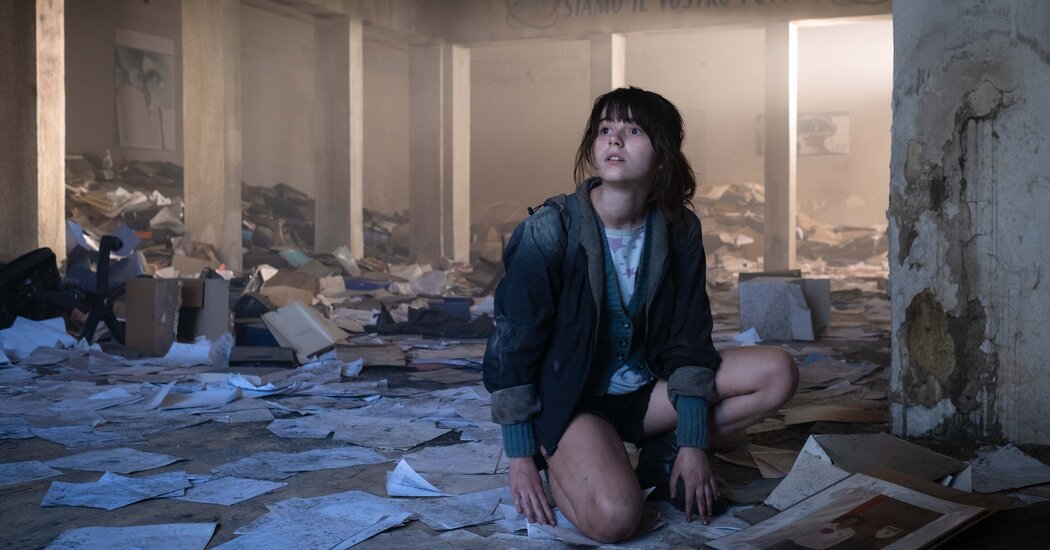
Working with the cinematographer Gogò Bianchi and the production designer Mauro Vanzati, Ammaniti turns Sicily into an abandoned wonderland seen from a child’s point of view: a mix of carnival, reverie and limitless rubbish pile. “Anna” evokes a tradition of the fantastical in Italian cinema, from Fellini to Paolo Sorrentino, while remaining tied to its realistic, and sometimes harrowing and quite violent, action. Other references also pop into your mind as you watch: Spike Jonze’s “Where the Wild Things Are” in the forest scenes; “Alice in Wonderland” and Dickens’s feral children in scenes set in a decaying Palermo mansion.
The show’s real theme is storytelling in its mythical and fairy-tale modes, and the story focuses on a fairy-tale pair: a resourceful 13-year-old, the Anna of the title (Giulia Dragotto), and her younger half brother, Astor (Alessandro Pecorella, in a remarkably composed performance). They live a lonely and, under the circumstances, bucolic existence in the country house where their mother (Elena Lietti) brought them before her death. The mother’s bones now lie in state in an upstairs bedroom while Anna makes dangerous foraging trips into the city, telling Astor that he will die if he ventures beyond the wooded property’s fence while she’s gone.
Astor eventually learns that she’s lying, in a turn of events that separates the siblings and sets the story in motion. This sends Anna on a quest to find her brother, occasionally helped by Pietro (Giovanni Mavilla), a nice guy with a motorcycle, and nearly fatally hindered by two indolent twins holed up in what was their family’s grocery store.
The long central portion of the series takes place in a villa commandeered by Angelica (Clara Tramontano), whom we see in flashbacks as a budding psychopath before the virus arrived. Now she has transformed herself into a theatrically costumed shaman, acting out what she remembers from reality-TV competitions and fashion magazines, and gathered a flock of younger children as her congregation. It’s a prepubescent, post-apocalyptic Burning Man, with the occasional blood sacrifice and wandering goat. Ammaniti does well with the spectacle of children enacting adulthood amid decorative squalor, and this is the strongest section, along with the early scenes in the forest.
Not all of the peripatetic story’s byways are as interesting, and “Anna” has the opposite problem of many current mini-series adaptations: Instead of feeling stretched out, it feels as if Ammaniti was trying to pack too much in. (Because of the real-world pandemic, the series order was reduced from eight episodes.)



